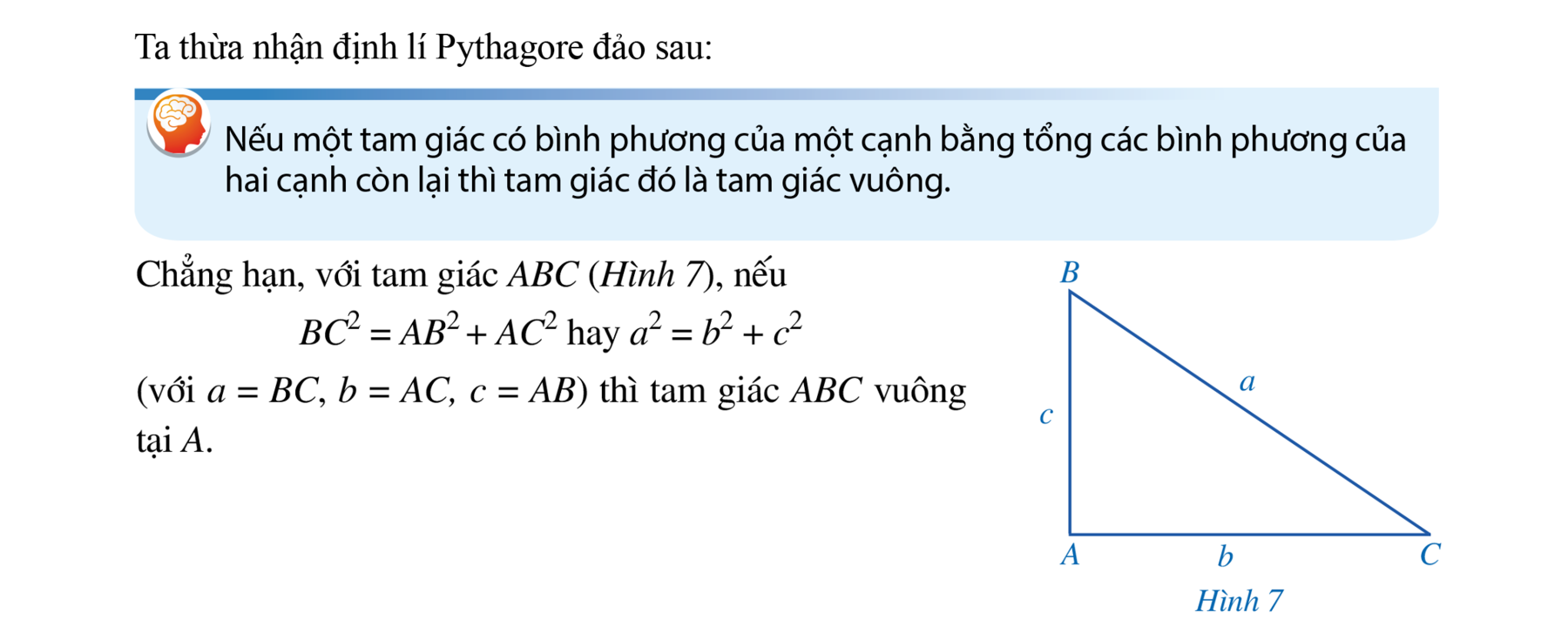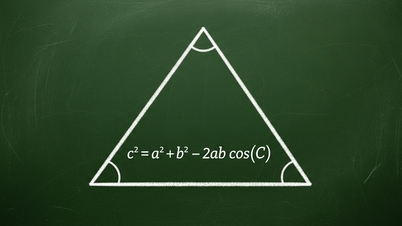What is the Pythagorean Theorem?
In the Math 8 textbook, Canh Dieu series, page 97, the Pythagorean theorem states as follows: In a right triangle, the square of the hypotenuse is equal to the sum of the squares of the two sides.

The theorem is named after the Greek mathematician Pythagoras, who first proved it, although the relationship between the sum of the squares of the sides of a right triangle has been known for quite some time.
There are many ways to prove the Pythagorean theorem, including both geometric and algebraic proofs, some of which have been known for thousands of years.
Pythagorean theorem formula
The mathematical formula for the Pythagorean theorem is
| a 2 + b 2 = c 2 |
In there:
a and b are the lengths of the two sides of the right angle
c is the length of the hypotenuse
For example: Given a right triangle ABC at A with AB = 5cm, AC = 12cm. Calculate the length of side BC
Answer: Because triangle ABC is a right triangle at A, according to the Pythagorean theorem, we have: BC 2 = AB 2 + AC 2 = 5 2 +12 2 = 169. So BC = 13 (cm)
Formula of the converse of the Pythagorean theorem
The converse of the Pythagorean Theorem is If the square of one side of a triangle is equal to the sum of the squares of the other two sides, then the triangle is a right triangle.

For example: Given triangle DEG with DE = 7cm, DG = 24cm and EG = 25 cm. Is triangle DEG a right triangle?
Answer: Considering triangle DEG we have
EG 2 = 25 2 = 625
DE 2 + DG 2 = 7 2 + 24 2 = 49 + 576 = 625
So EG 2 = DE 2 + DG 2 . Therefore, triangle DEG is right-angled at D (by the converse of the Pythagorean theorem).
Interesting facts about Pythagoras
Pythagoras (c. 570 BC - 495 BC) was an ancient Greek mathematician and philosopher. Pythagoras believed in the power of numbers and considered everything in the universe to be explainable by numbers. He discovered that harmonic sounds could be explained by the ratio of string lengths. For example, a string with a length ratio of 2:1 would create an octave, a string with a length ratio of 3:2 would create a fifth. This was the first connection between mathematics and music , laying the foundation for Western music theory.
No original works of Pythagoras survive. What is known of him was recorded by his students and later philosophers, such as Aristotle. So much myth and fact is mixed in his biography.
Source: https://vietnamnet.vn/dinh-ly-pythagorean-la-gi-cong-thuc-dinh-ly-pythagorean-thuan-dao-2452857.html


![[Photo] General Secretary To Lam attends the 18th Hanoi Party Congress, term 2025-2030](https://vphoto.vietnam.vn/thumb/1200x675/vietnam/resource/IMAGE/2025/10/16/1760581023342_cover-0367-jpg.webp)
![[Photo] Conference of the Government Party Committee Standing Committee and the National Assembly Party Committee Standing Committee on the 10th Session, 15th National Assembly](https://vphoto.vietnam.vn/thumb/1200x675/vietnam/resource/IMAGE/2025/10/15/1760543205375_dsc-7128-jpg.webp)










![[Video] Expected to issue digital diplomas and certificates at the same time as paper diplomas](https://vphoto.vietnam.vn/thumb/402x226/vietnam/resource/IMAGE/2025/10/16/1760601732180_720-jpg.webp)



















![[Video] TripAdvisor honors many famous attractions of Ninh Binh](https://vphoto.vietnam.vn/thumb/402x226/vietnam/resource/IMAGE/2025/10/16/1760574721908_vinh-danh-ninh-binh-7368-jpg.webp)



































































Comment (0)